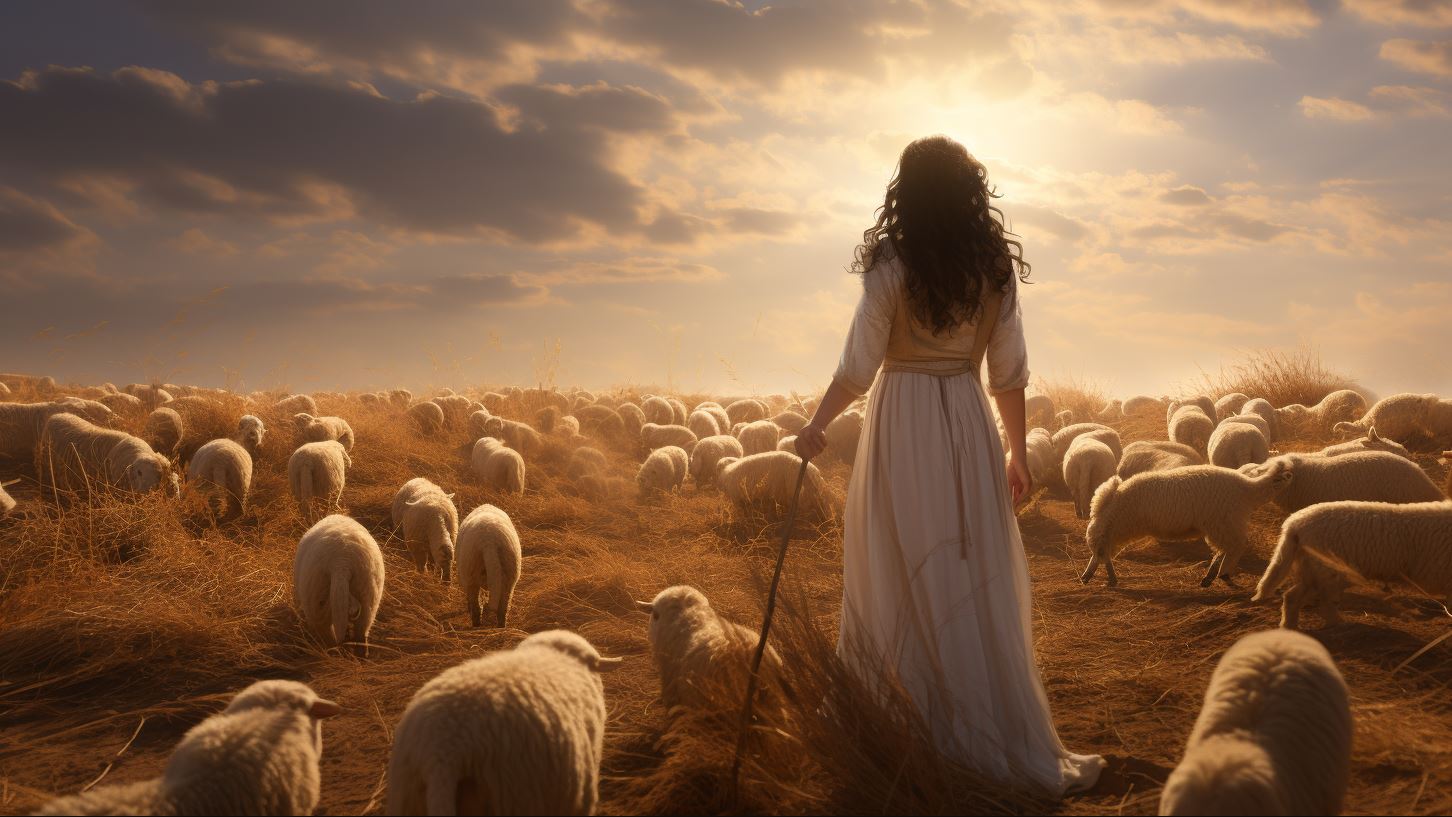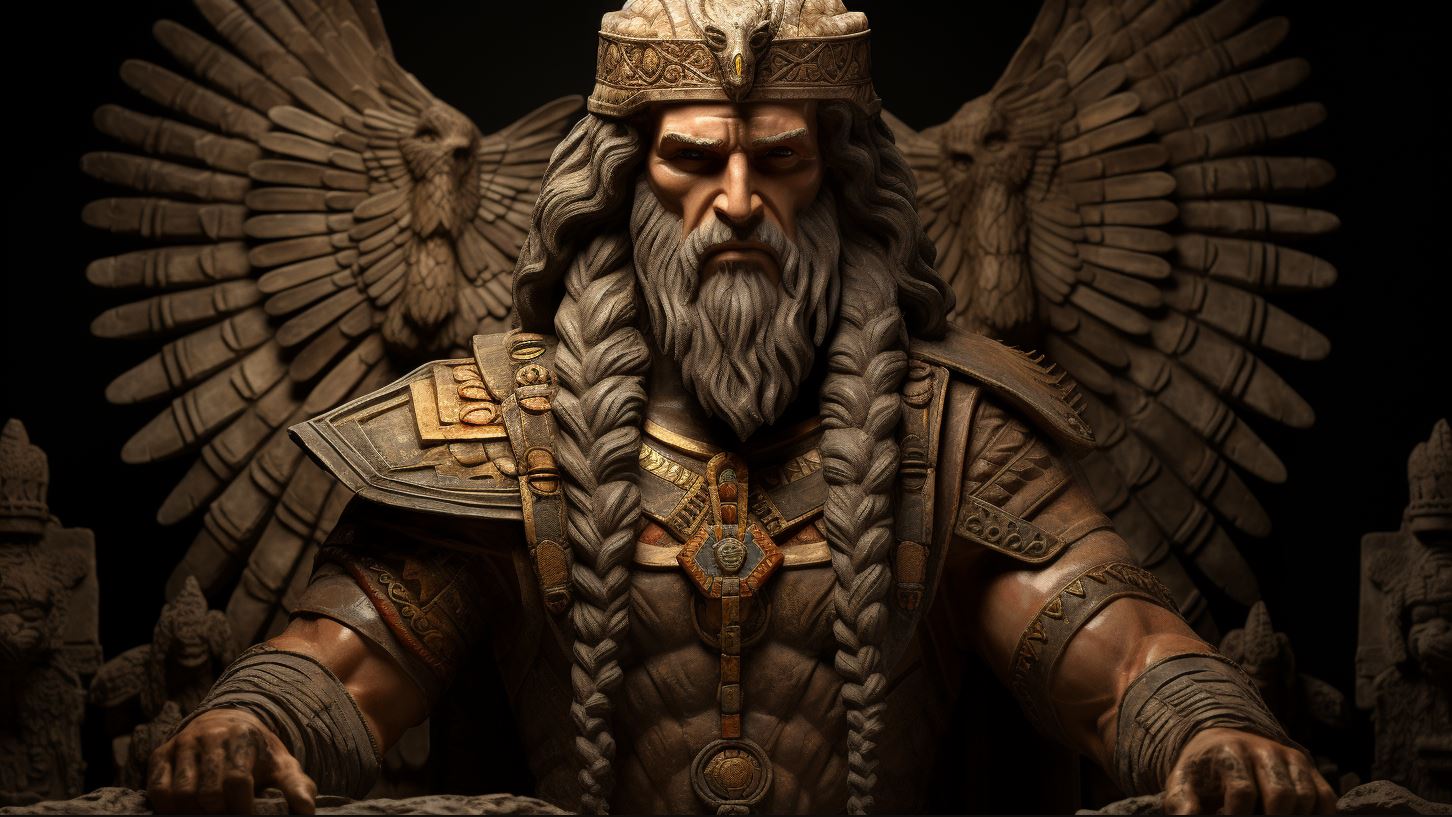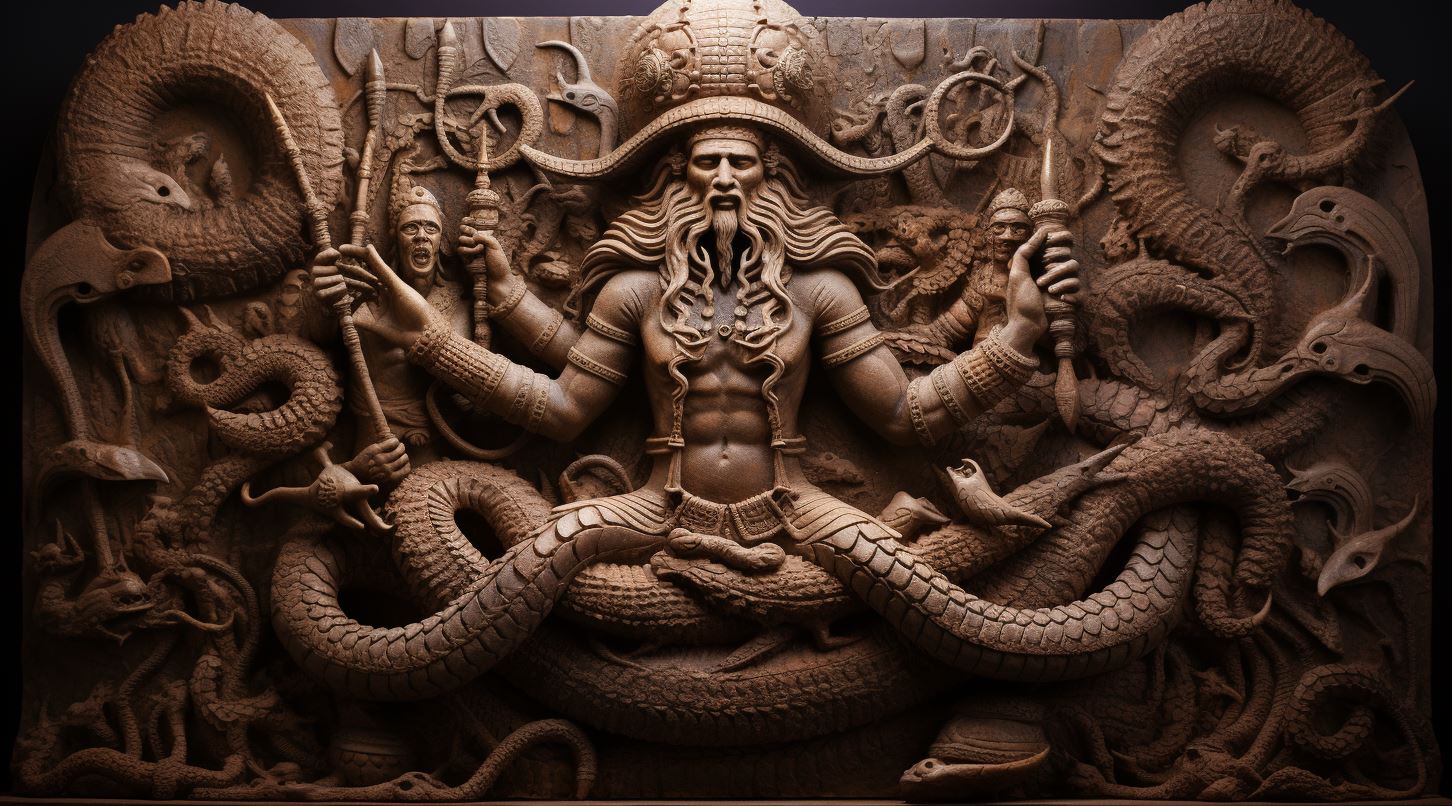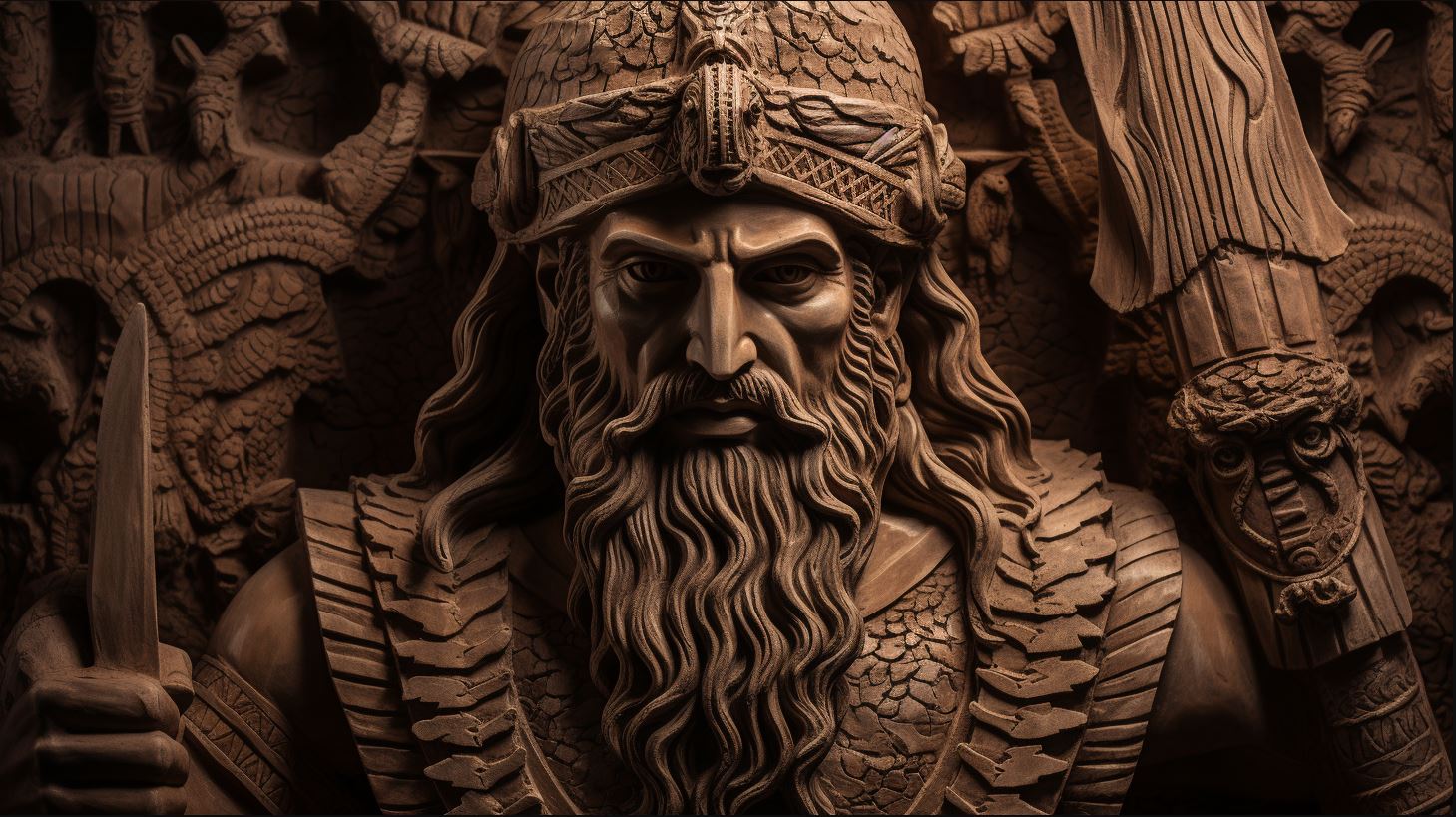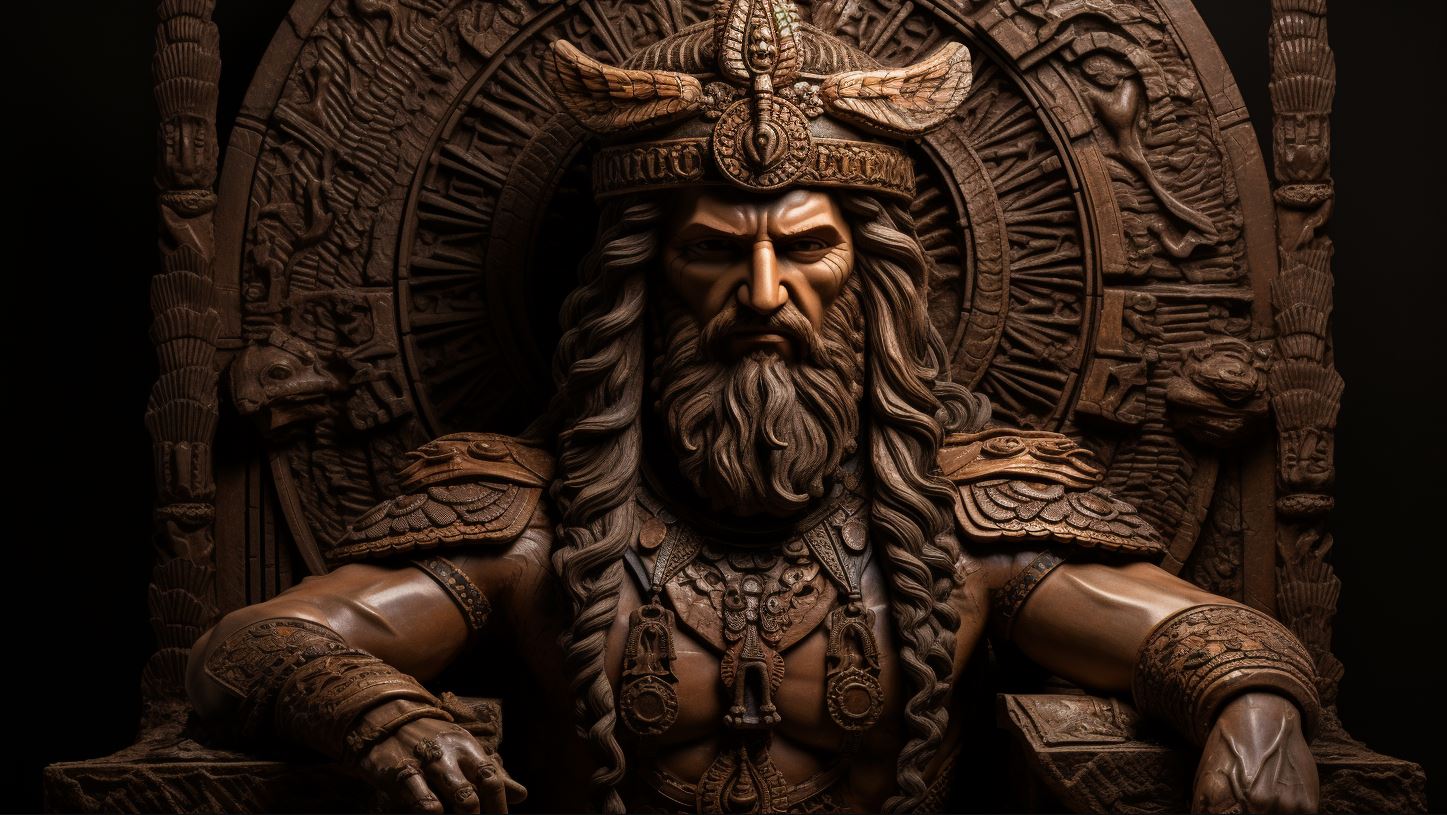Lahar Sumerian Goddess: Exploring the Ancient Deity of Livestock

Lahar, a Sumerian goddess, holds a significant role in ancient mythology as a deity associated with livestock, particularly sheep. Alongside her sister Ashnan, the goddess of grains, Lahar was created to provide sustenance for the Anunnaki gods.
Their presence among humans led to bountiful harvests and abundance in the land. In the myth of the Debate between the Sheep and the Grain, Lahar and Ezina, another entity, were bestowed upon humanity for their wellbeing and livelihood.
Lahar’s characteristics and possessions include empowering warriors and overseeing elite troops, among other responsibilities.
Overview of Lahar in Sumerian Mythology
In Sumerian mythology, Lahar is a significant goddess with a unique and essential role. She is primarily associated with livestock, particularly sheep, and holds a prominent position among the pantheon of deities.
As a powerful deity, Lahar’s gender is subject to debate, but she is generally accepted as a female goddess in the Middle Babylonian period.
One of Lahar’s main responsibilities is as the goddess of cattle.
She holds a vital role in ensuring the prosperity and abundance of livestock in Sumerian society. Alongside her sister Ashnan, the goddess of grains, Lahar was divinely created to provide sustenance for the Anunnaki gods, who relied on the offerings of livestock.
In the sacred chamber of the gods, Lahar and Ashnan were formed with a specific purpose – to supply food and sustenance to the divine beings. However, the gods soon decided to send Lahar and her sister to live among humans.
This decision brought great abundance and prosperity to the earth, as Lahar’s presence resulted in the flourishing of livestock, ensuring a steady supply of food for both gods and humans.
The myth of the Debate between the Sheep and the Grain sheds further light on Lahar’s divine nature and her connection to humanity.
Created in the sacred Mountain, Lahar symbolizes the radiant charm and enchanting qualities of a shepherd, while her companion, Ezina, represents beauty and grace. Their union brings wealth and sustenance, filling storehouses and granaries with bountiful animals, significantly improving the lives of humans.
It is important to note that Lahar’s significance goes beyond her association with livestock. She possesses unique attributes and possessions that contribute to her revered status. Lahar is said to bestow power upon the fearless warriors, making them fearless in battle.
Her lineage can be traced back to the sacred place, giving her authority over all the wools of Uttu and the splendor of reign. Additionally, Lahar holds various assets, including the supervision of elite troops, the provision of sustenance to workers in the fields, and the ownership of diverse oils used in sacrifices.
Throughout Sumerian society, worship and admiration for Lahar were prevalent. Many agricultural rituals were dedicated to honoring her to ensure the fertility and success of livestock. Her influence even extended to the realm of warriors and military activities, evidencing her widespread patronage and significance in various aspects of Sumerian life.
Lahar’s Role as a Goddess of Livestock
In Sumerian mythology, Lahar holds a significant role as a goddess associated with livestock. Let’s explore her connection to sheep and animal husbandry, as well as her relationship with Ashnan, the grain goddess.
Lahar’s Connection to Sheep and Animal Husbandry
Lahar’s primary association is with sheep and the practice of animal husbandry. She is revered as the deity responsible for the welfare and prosperity of flocks. Sumerian shepherds looked to Lahar for guidance and protection, as she ensured the abundance of livestock and safeguarded them from harm.
Her influence extended beyond just sheep, as she was also venerated as a guardian of all types of animals, ensuring their health, reproduction, and successful rearing. Lahar’s divine presence was believed to bring fertility, ensuring the continuity of herds and the prosperity of those who relied on them for sustenance.
Lahar’s Relationship with Ashnan, the Grain Goddess
Within Sumerian mythology, Lahar shares a unique connection with her sister, Ashnan, who personifies the grain. Together, they form a complementary partnership, symbolizing the intertwining nature of livestock and agriculture, crucial for the prosperity of human civilization.
Lahar and Ashnan were created as divine entities in the gods’ chamber of creation expressly to provide sustenance to the Anunnaki gods. While Lahar was responsible for ensuring plentiful livestock, Ashnan oversaw the production and abundance of grains.
The symbiotic relationship between Lahar and Ashnan highlights the interdependence of animal husbandry and agriculture, showcasing the essential role they played in sustaining the divine and mortal realms alike.
- Lahar ensures the abundance and welfare of livestock, primarily sheep
- She is also revered as a guardian of all types of animals
- Lahar’s divine presence brings fertility and prosperity to those who rely on livestock for sustenance
- Ashnan, the sister of Lahar, personifies the grain
- They form a complementary partnership, symbolizing the intertwining of livestock and agriculture
- Together, they ensure the sustenance and prosperity of both gods and humans
Understanding Lahar’s essential role in livestock and her connection to Ashnan helps shed light on the symbiotic relationship between animal husbandry and agriculture in ancient Sumerian society.
The Myth of the Debate between the Sheep and the Grain
The myth of the Debate between the Sheep and the Grain is an intriguing tale from Sumerian mythology. Within this myth, Lahar and Ezina are mentioned and play crucial roles in the narrative.
Lahar and Ezina’s Creation and Purpose
Lahar and Ezina were created within the sacred Mount Kur for a specific purpose—to provide sustenance for the Anuna gods. However, their initial attempts to satisfy the gods’ appetite fell short, leading to a decision to send Lahar and Ezina to live among humans.
Lahar and Ezina as Providers for Humans
Once sent to live among humanity, Lahar and Ezina became providers of abundance and prosperity. Lahar, a charming shepherdess, ensured the flourishing of livestock, while Ezina, a radiant and enchanting young woman, brought fertility to the fields, filling storehouses with grains and animals.
Lahar’s Characteristics and Possessions
Lahar possesses various notable characteristics and possessions. Descending from the sacred place, she holds authority over Uttu’s wool and claims ownership of the splendor of the kingdom. Additionally, Lahar is associated with the supervision of elite troops and the sustenance of workers in the fields.
She also holds custodianship of various oils used in sacrificial rituals.
In conclusion, the myth of the Debate between the Sheep and the Grain introduces Lahar and Ezina as significant figures in Sumerian mythology.
Their creation and purpose to provide for the gods and subsequently for humanity highlights the important roles they play in sustaining abundance and prosperity. Lahar’s captivating qualities and possessions further enhance her significance within the myth.
Lahar and the Anunnaki
Lahar’s Creation in the Gods’ Chamber of Creation
In the ancient Sumerian beliefs, Lahar, the goddess of livestock, was among the deities created by the Anunnaki gods in the sacred chamber of creation. She was brought into existence alongside her sister, Ashnan, the goddess of grains.
Lahar’s origin can be traced back to this revered place, where the gods shaped and endowed her with divine powers and responsibilities.
Lahar as a Gift to Humanity from the Anunnaki
After Lahar and Ashnan were created, the Anunnaki deities made a momentous decision by sending them to live among humans.
This act of benevolence aimed to bless humanity with the abundance of livestock and crops as provided by Lahar and Ashnan. Lahar’s role as a deity responsible for overseeing livestock, including the care and well-being of herds, was bestowed upon her.
The Anunnaki saw fit to entrust Lahar, with her abundant wisdom and charm, to humanity as a generous gift towards their sustenance and welfare.
Note: This section, “Lahar and the Anunnaki,” delves into the goddess Lahar’s creation and her significance as a gift to humanity in Sumerian mythology.
It explores her role as a caretaker of livestock and the decision made by the Anunnaki to bless humankind through her presence.
The Worship of Lahar in Sumerian Society
The worship of Lahar, a prominent figure in Sumerian mythology, played a crucial role in the religious practices of the society. Lahar’s importance extended to various areas, including agricultural rituals and the military.
Let’s delve into the significance of Lahar in these aspects.
Lahar’s Importance in Agricultural Rituals
In the agricultural domain, Lahar held immense significance as a deity associated with livestock. Farmers and herders revered Lahar for her ability to ensure the prosperity of their flocks. She was believed to bring abundant harvests and grant fertility to the land.
During agricultural rituals and ceremonies, Lahar was invoked to bless the fields, promote growth, and safeguard the well-being of the animals.
Lahar’s Influence on Warriors and Military
Beyond her association with agriculture, Lahar also exerted her influence on the military sphere of Sumerian society. Warriors sought her divine assistance and protection in times of conflict. Lahar was believed to confer power and courage to those who worshiped her, instilling fearlessness in the hearts of soldiers.
As they embarked on battles, they attributed their successes to the blessings and guidance of Lahar, considering her an esteemed patron of their military endeavors.
The Role of Lahar in Society
- Lahar’s involvement in agricultural rituals ensured prosperous harvests and the well-being of livestock.
- Warriors revered Lahar for her divine intervention and protection during military engagements.
- Her influence extended to both the agricultural and military aspects of Sumerian society, showcasing her prominent role in people’s lives.
.











